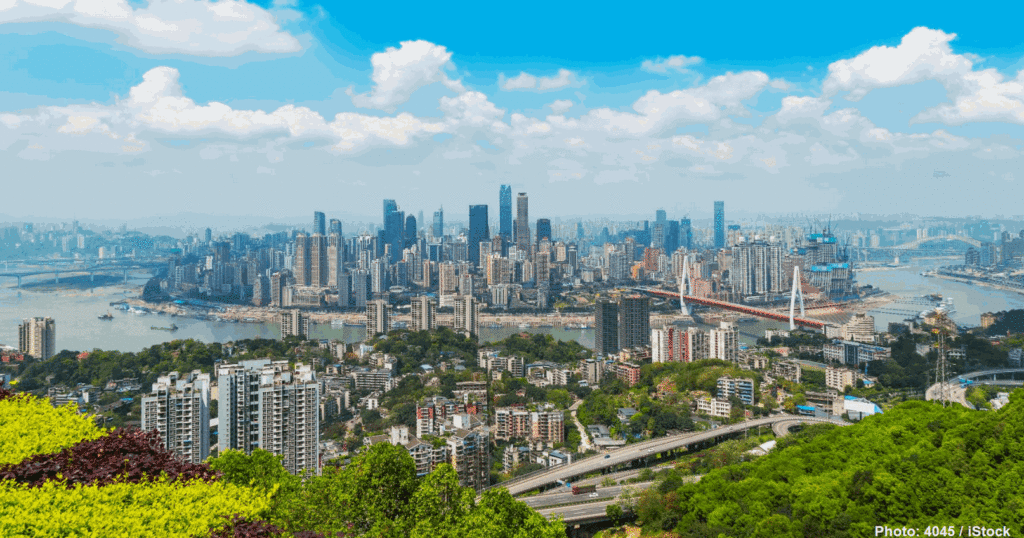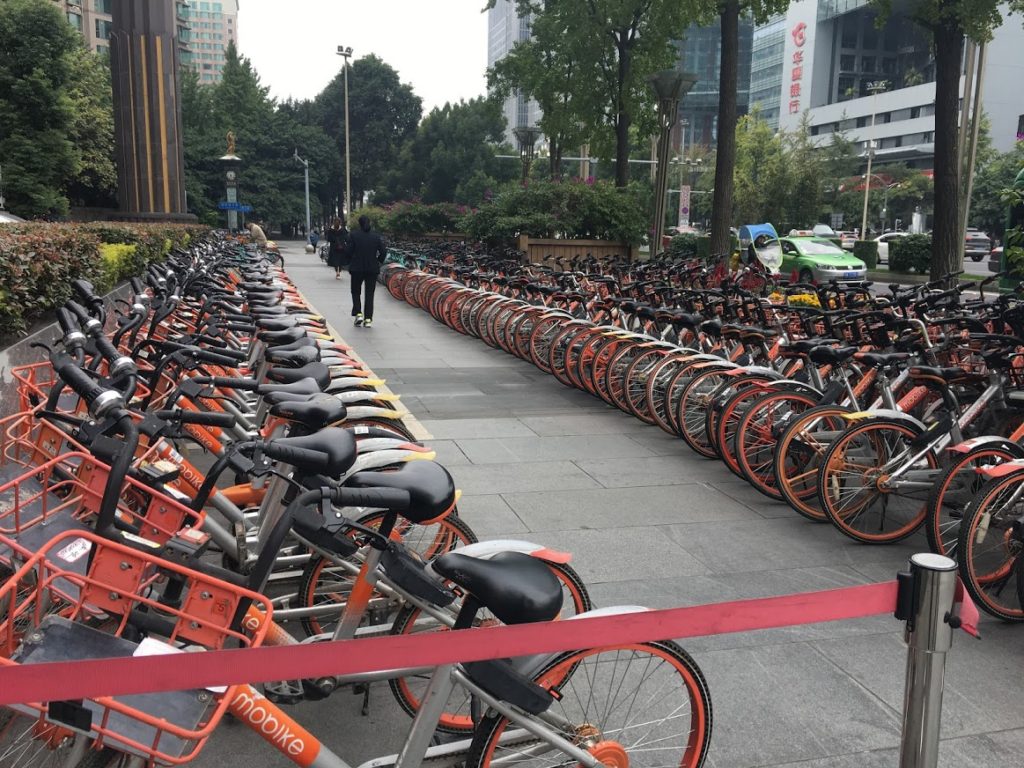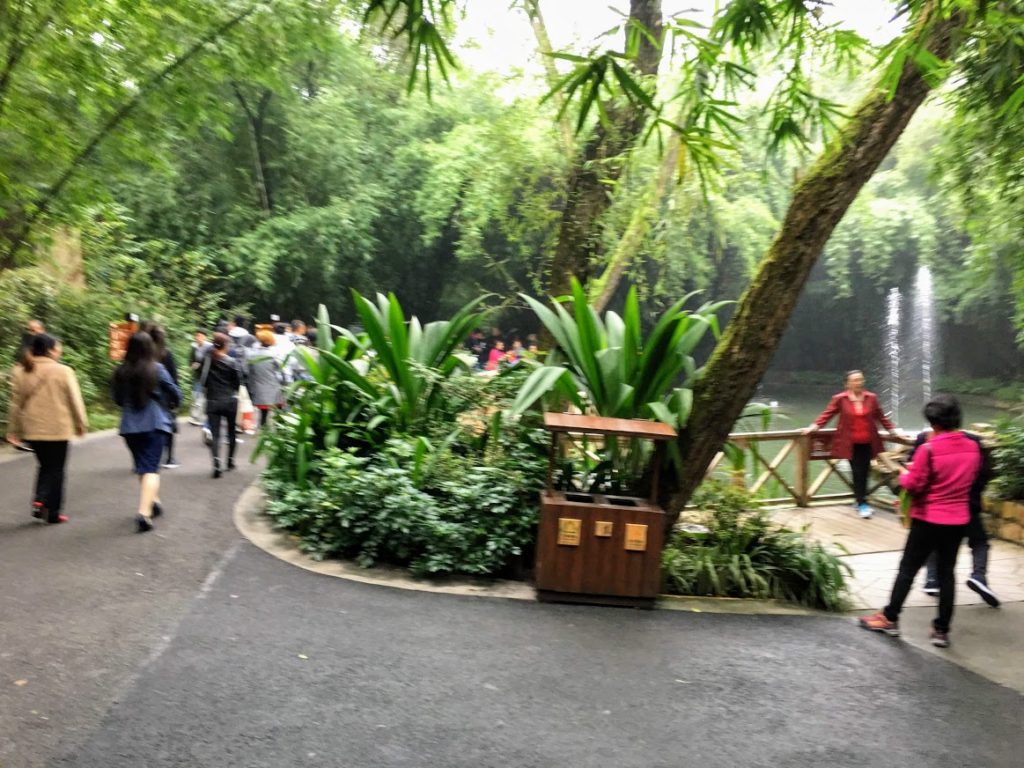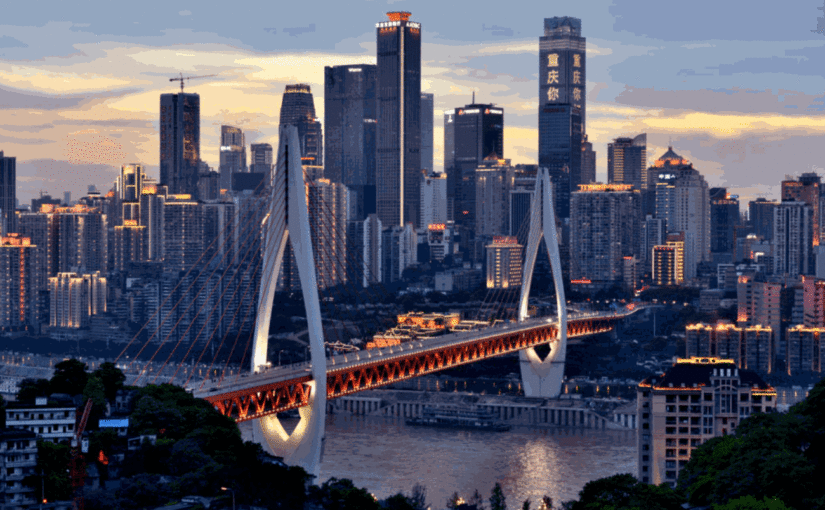Chongqing is a tiny third tier city within China.
This is the second part of a three part narrative. In it, an expat Fred Reed, visits China for the first time in over a decade. His impressions are priceless. I have been here in China, for a long and long time. So many things that I take for granted are astounding and shocking to others. I think that most people will get a kick out of his impressions. So here we are with part two…
From the post “Cheng Two: More Notes on Two Weeks in China” by Fred Reed written on November 20, 2018. All credit to the author.
Cheng Two: More Notes on Two Weeks in China
This is my second column on the two weeks that Vi and I just spent in Chengdu, China.

It is meant not so much as a travelogue as a snapshot of what is going on in an economic juggernaut. Judging by email from readers, many do not realize the scope and scale of China’s advance.
Neither did I: Since I was last in the country twelve years ago, much has changed.
Reading journals is one thing. Walking the streets is another.
Having heard much about China’s high-speed rail, we bought tickets to Chongqing, a mountain town of thirty million at a distance of 250 miles from Chengdu.

At risk of sounding like a shameless flack for Chinese infrastructure, I can report that the rail station in Chengdu was huge, attractive, well-designed, brightly lit, and full of people.
I know…
I know…
I keep saying things like this.
Well, dammit, they are true.
As a self-respecting journalist, I don’t like to tell the truth too often, but here I will break with tradition.
Having gotten tickets beforehand we waited until our train was called, in Mandarin and English, as was true also in the city’s subway. Apparently Chengdu wants to be an international city and someone thought about it.
Anyway, the train pulled in and looked like a freaking rocketship. We boarded and found it to be clean and comfortable, with most of the seats filled. Off we went, almost in silence, and shortly were sailing through countryside.
At a cool 180 miles an hour. It was like stepping into a future world. I thought about buying one of these trains and entering it in Formula One, but I suspect that it would not corner well.

You can book here.
Fast rail is hardly unique to China, but the scale is. So far there are 17,000 miles of fast rail in China, aiming at 24,000 by 2025. The United States couldn’t finish the environmental impact statement as quickly.
The Shanghai maglev line reaches 267 mph.
The Chinese passengers seemed no more impressed by the train than by a city bus.
They are used to them.
They think such trains are normal.

As an American, I was internally embarrassed. A few years ago Vi and I went from Chicago to the West Coast on Amtrak. It was not uncomfortable, but slow, appearing to use about 1955 technology.
We went through the mountains often at barely more than a walking pace.
There were until recently regular flights from Chengdu to Chongqing. When rail went live, the flights died.
Nobody wanted the hassle and expense of flying.
Here is much of why the US has not one inch of fast rail: It would kill of a lot of business for politically well connected airlines.
For example, Chinese fast rail from DC to Manhattan would close down air service in about fifteen minutes.
Fast rail between many American cities would be faster than flying when you added in getting to the airport hours before, and from the destination airport to the city afterward.
… And much more agreeable.
On another day we rented a car and driver and drove three hours to a town near the Tibetan border. A tourist burg, it was not interesting, but the ride was.
The highways were up to American standards…
… when America had standards.
The astonishment began when we reached the mountains. The American response to mountains usually is to go over them or around them through valleys.
This is not unreasonable, but neither is it the Chinese way. They go through mountains. We went through–I’ll guess and say a dozen–tunnels, all of four lanes, all miles long (one said to be nine miles) lighted and straight.
This was done in two parallel tunnels, each carrying two lanes in one direction or another.
Valleys?
We crossed them on bridges or elevated highways. The result was that a heavy truck would not have to gear up and down. Yes, I know, this probably would not work everywhere, but it worked there.
If there is anything in the US remotely resembling this, I am unaware of it.
There may be a long list of things the Chinese can’t do. Building stuff won’t be on it.

Internet: Almost everybody uses WeChat (“Connecting a billion people….” says its website) an app similar to WhatsApp that does the usual things but lets you pay bills electronically.
You hold your phone up to the taxi driver’s, information is exchanged, and your account debited. (“I’ll show you mine if you show me yours.”)
This is not new technology, but the scale is.
People go out at night without cash, which may cease to exist in a few years.
China seems to have leapfrogged the credit card.
The government monitors WeChat and you can definitely get in trouble for plotting to kill the Politburo. (Both Alibaba and Baidu have competing systems.)
The country invests hard in electric cars, but you seldom see one. (They have green license plates instead of blue.) The reasons, say people here, are the objections one hears in the West: Charge time, and expense without governmental subsidies, which exist.
Obesity does not exist. In two weeks we did not see a single example. Maybe porkers are arrested and ground into sausage–I don’t know–but they ain’t none in sight. The reason may be diet.
Or bicycles. See below.

Chengdu’s claim for international attention is its pandas.
These were thought to be on the way to extinction when apparently the government decided extinction wasn’t a good idea.
Boom, the panda zoo appeared.
As my friend in the city says, when the government decides to do something, it happens.

In the National Zoo in Washington, the animals live in smallish enclosures of glass and cement bearing little resemblance to their natural environment.
By contrast, the pandas live in what seem to be acres of forest. This means that you cannot always see them. They do what pandas think proper in the manner they think proper.
Visitors walk through, in forest gloom, on walkways overhung with branches.
One never feels sorry for the animals.
While I think we were the only round-eyes we saw, the throngs of locals were sometimes oppressive.
OK, that’s the snapshot.
The lesson to take away, or at any rate the one I took away, is that this is a very serious and competent country and not to be underestimated.
Conclusion
Fred said it best;
This is a very serious and competent country and not to be underestimated.
I’m publishing this in the midst of the American bio-weapons attack as part of the Trump Trade Wars.
(Oh, you can poo-poo this notion. What ever. It doesn't matter what YOU think. All that matters is what China thinks, and they are treating it as a Bio-weapons attack and are now at DEFCON ONE.)
As such, it is amazing how well organized everything is.
Stores are open. Groceries are being delivered by drones. Secure areas are blocked off, monitored and policed. Even childhood cartoons are with the program.

And it’s not just one, or two. It’s all of them. All generated in the LAST WEEK.

People in America haven’t a clue how organized and serious China actually is. All that they have is that black and white cardboard neocon narrative. It is something that doesn’t resemble anything even approaching reality.
Look guys. I am getting tired of stressing this…
If you push too hard… and neocon Washington… I am talking to you. Asia will strike back. It will be Russia AND China simultaneously. You have no fucking idea how bad it can get.
STOP FUCKING AROUND.
Genghis Khan will bitch slap America back to the stone age. Heed my warning. Please.

I hope that you enjoyed this post. If you want to see others of a similar nature, please check out my Happiness Index. Here…
Life & HappinessArticles & Links
You’ll not find any big banners or popups here talking about cookies and privacy notices. There are no ads on this site (aside from the hosting ads – a necessary evil). Functionally and fundamentally, I just don’t make money off of this blog. It is NOT monetized. Finally, I don’t track you because I just don’t care to.
- You can start reading the articles by going HERE.
- You can visit the Index Page HERE to explore by article subject.
- You can also ask the author some questions. You can go HERE to find out how to go about this.
- You can find out more about the author HERE.
- If you have concerns or complaints, you can go HERE.
- If you want to make a donation, you can go HERE.


